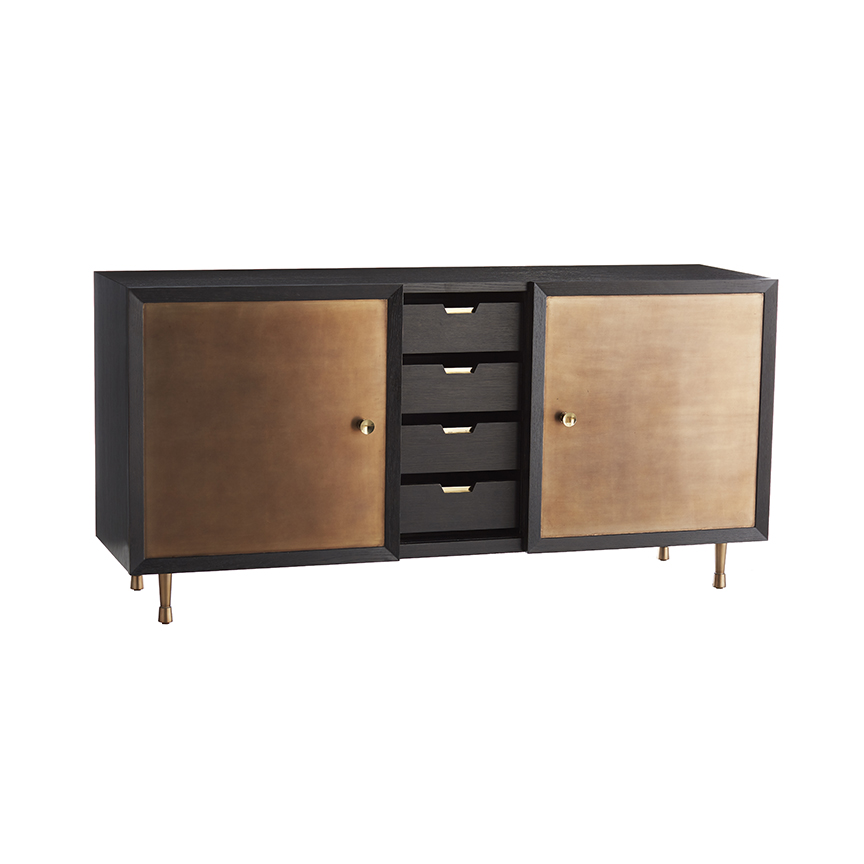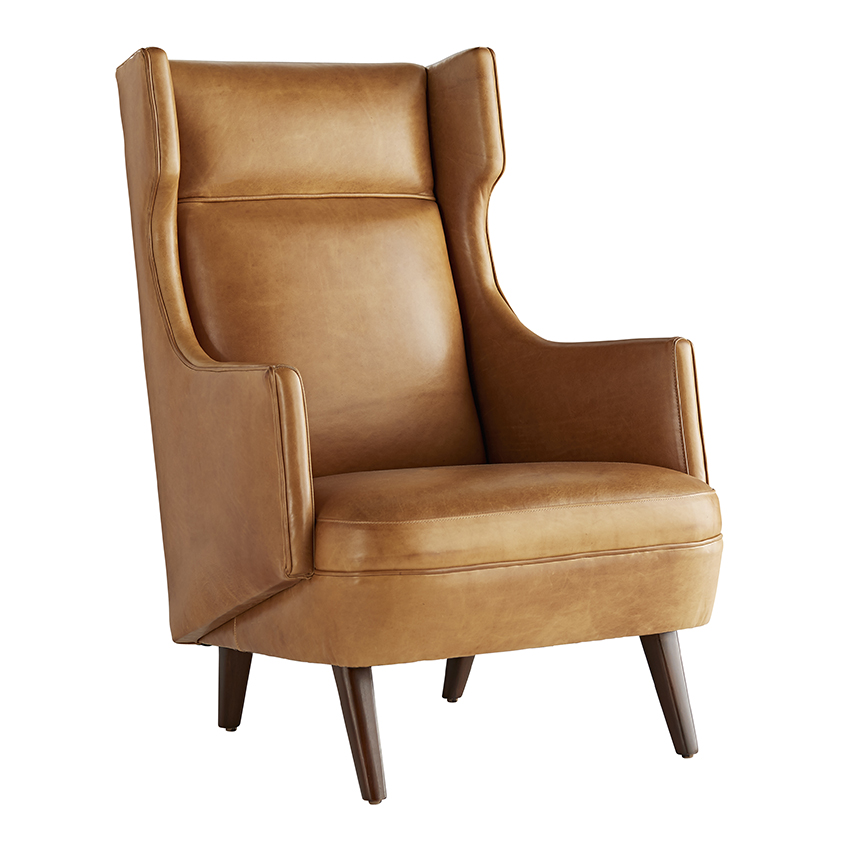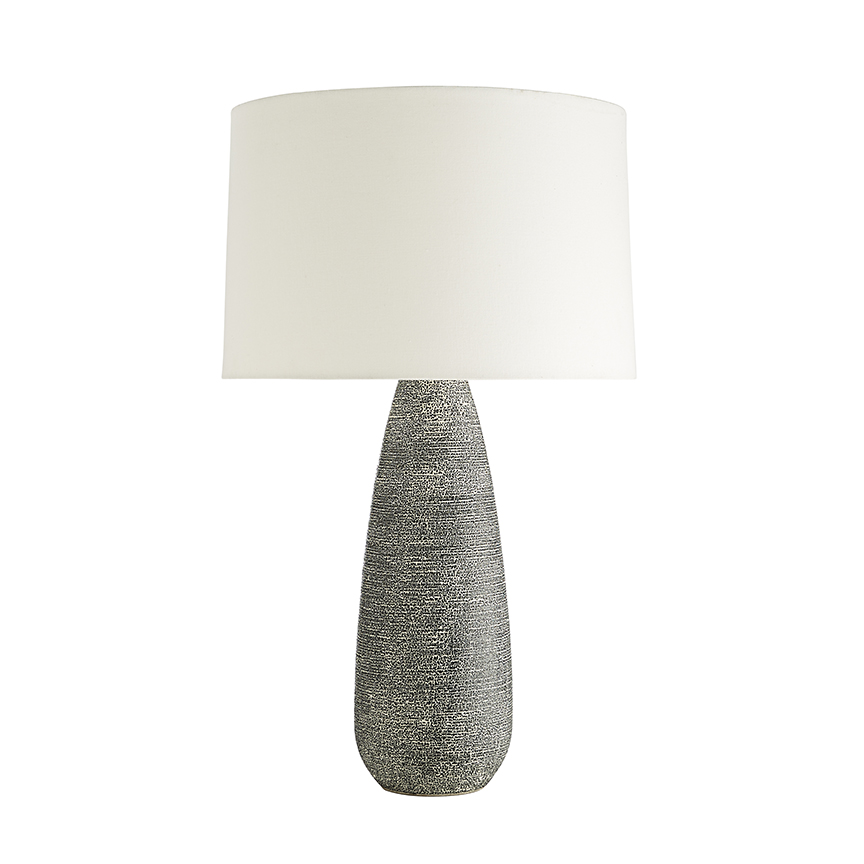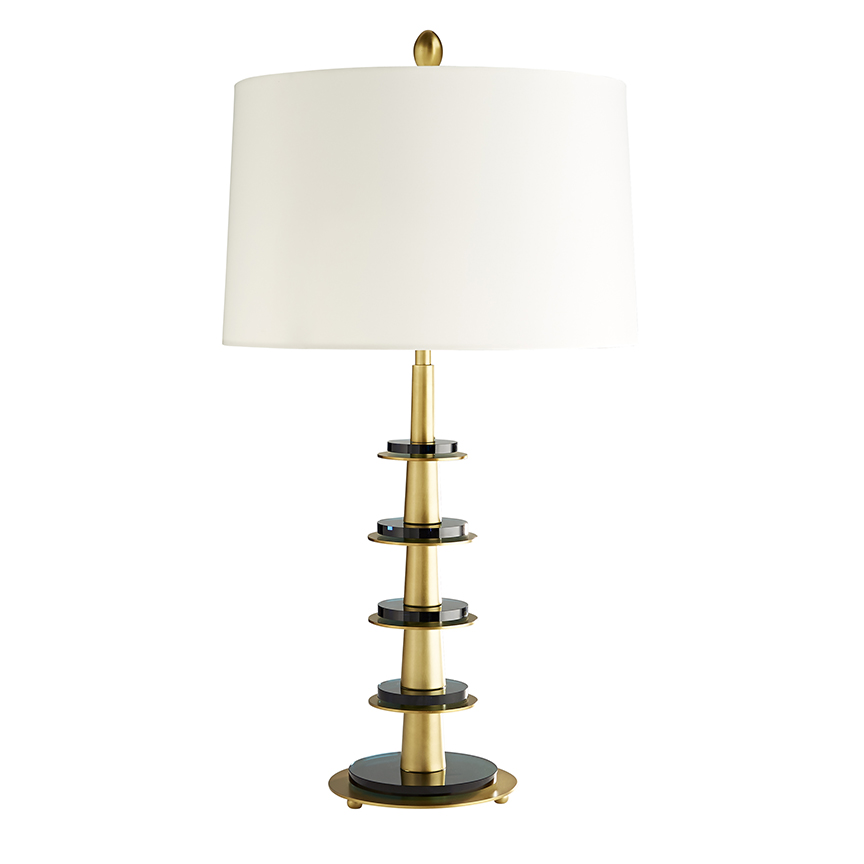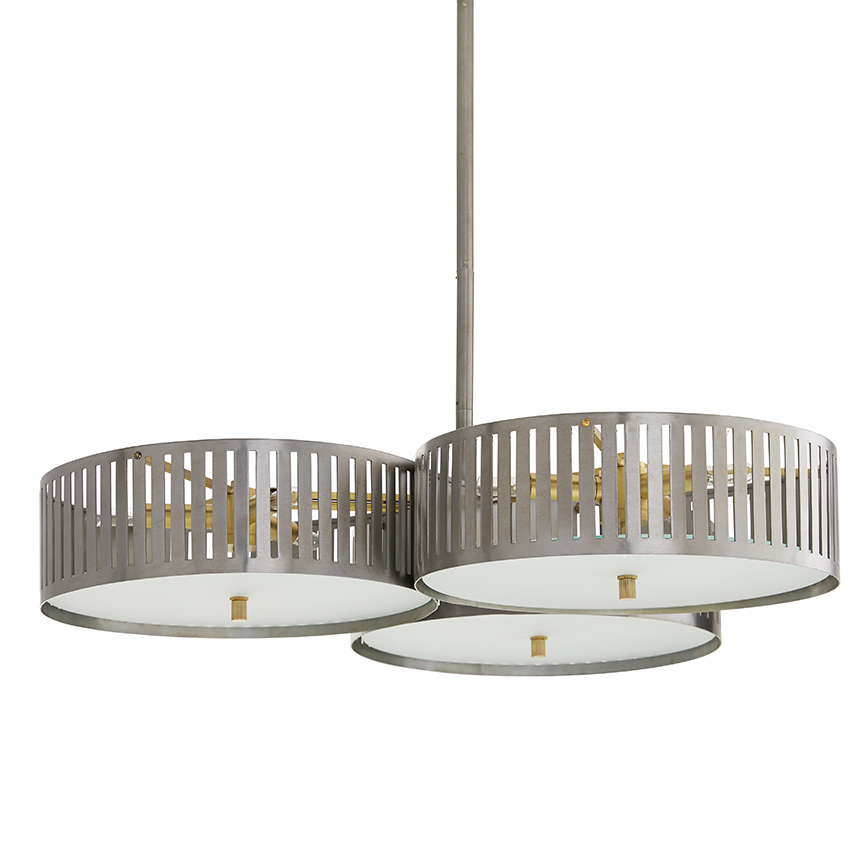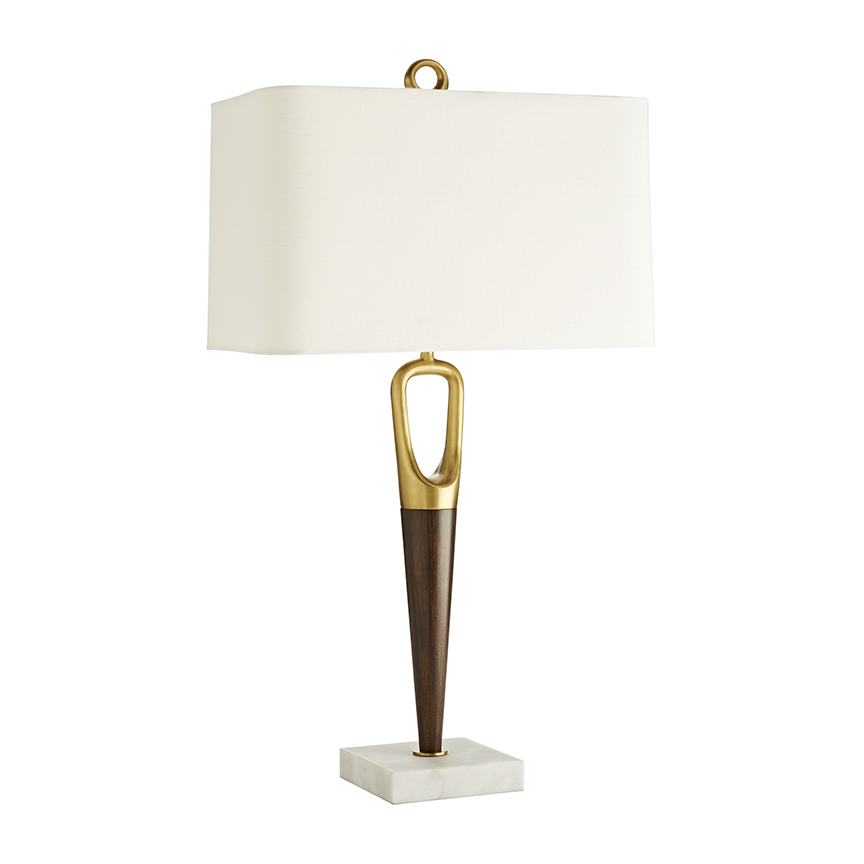It’s time to start thinking about resolutions. The new year is the perfect time to make changes and create a fresh perspective. Follow these 3 tips from Rebecca Snowden, Interior Style Advisor at Furniture Choice, for more mindful living in the new year.
Everything is fast, easy and digital, yet natural instinct pushes us to disconnect and slow down to regain our sense and quality of life.

1. Start with a clean and calm neutral palette
Begin the year refreshed and rejuvenated with the help of a home environment that focuses on living well.
Start by introducing a quality of softness into the home, coupled with interior design that’s comforting and inviting. “Let the intention of creating a clean and soothing ambiance guide your design decisions,” advises Rebecca. “Ultimately, the goal is to create a personal haven you’ll love going home to relax in.”
Make it a priority to get plenty of good quality sleep. In the bedroom, an oatmeal fabric bed presents the perfect starting point in a space meant for restful slumber. Introduce neutrals in varying tones for interest and depth. Safe, perennial hues to try to include white, soft grey and the recently popular greige.
Select comfortable bedding with minimal prints to focus on creating an uncluttered, restful environment. Where possible, go with furniture that features curves and organic lines instead of sharp, straight edges.
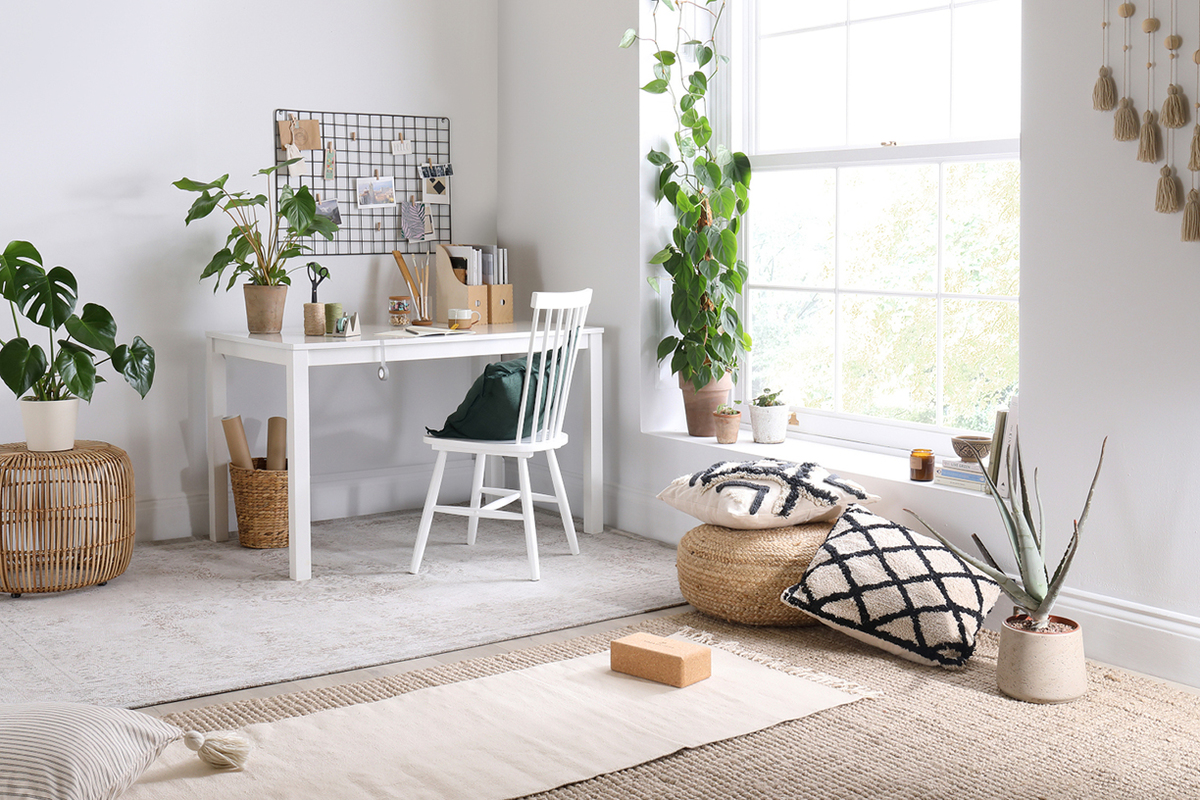
2. Nature is nurturing
Nothing relaxes the mind more than being surrounded by nature; particularly, plants. Start the year on a green note by maximizing on the benefits of having indoor plants. Choose a mix of large and small greenery and varieties that help clean the air. Leafy, trailing plants also inject a little wildness to create a tropical-inspired ambiance.
Besides making the air fresher, their lush green color is soothing on the eyes after a long day of working with screens.
To continue the natural theme, pick furnishings made with materials like wood, rattan, or clay. “The warmth and rawness of their surfaces contribute to a design that has a soothing, back to nature vibe,” says Rebecca.
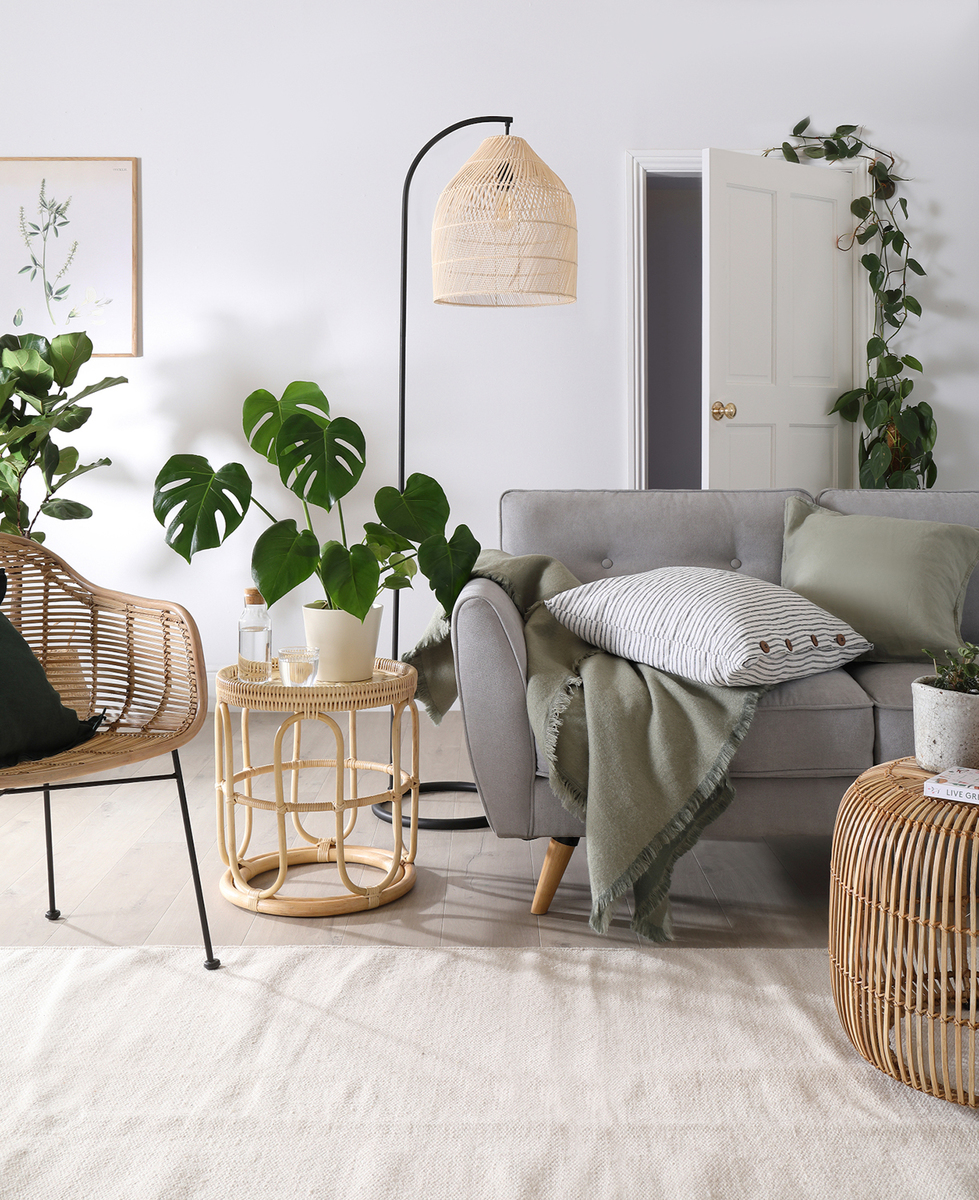
3. Dedicate a corner for conscious relaxation
As a reminder to make wellbeing a priority for the year ahead, allocate a corner that’s dedicated to relaxation. “A little nook will do; you’ll only need enough space to practice your preferred stretches,” says Rebecca. For meditation and stretching exercises, fit it out with a yoga mat or thick rug. “And if you have a work desk at home, it’s a good idea to carve out a zen zone within the same room for quick stretch breaks.”
Maintaining the same neutral palette, style the space in light hues, and include plenty of plants. Another factor to consider is the accessibility of natural daylight, as it can help reset a confused circadian rhythm. A wellness-inspired space that embraces disconnecting and being present will likely become a favorite spot in the home.
Photos courtesy of Furniture Choice Ltd
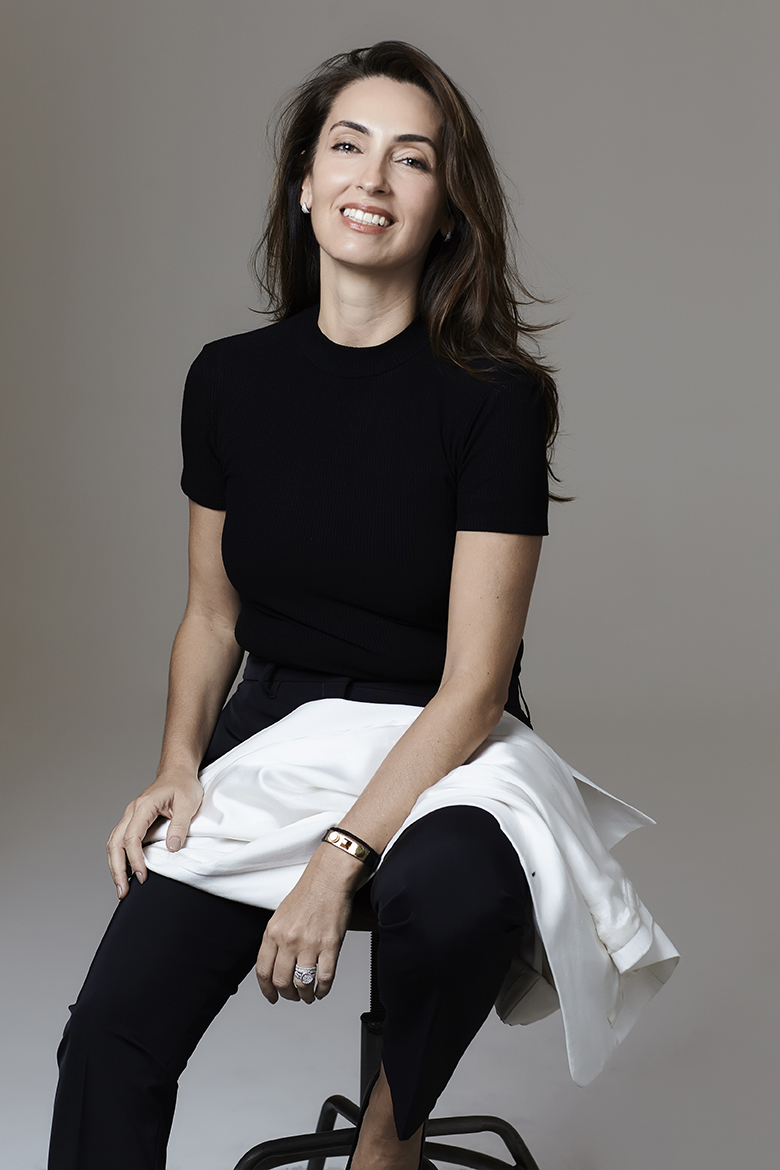
Headshot courtesy of Victor Affaro
From the Jumby Bay private island in Antigua to the palatial Palacio Tangara hotel in Sao Paulo, Brazilian architect and designer, Patricia Anastassiadis has collected a long, robust list of high profile international projects. Anastassiadis blends her love for anthropology, art, nature and history to create timeless and minimalist furnishings that create a dialogue.
Most recently, she was chosen to be the Creative Director to design Artefacto’s highly-anticipated 2019 collection, which hit South Florida showrooms this past summer. Unique Homes spoke with Anastassiadis to discuss her journey to create Artefacto’s 2019 collection, her style and the future of design in a changing world.
What was the first time that you ever thought about being a designer? Did it coincide with your original career path?
As a child, I was always put to sleep listening to Greek Mythology stories told by my father (who is Greek) and that exposed me at a very early age to the power of storytelling and the classics. My mother, on the other hand, is a fashion designer, a writer, and a painter. So as a teenager, I’ve always known that I would take part in the creative business … At 17, I decided to apply for an architecture major as we’ve realized that architecture has always been a reference and a part of my life.
Why do you do what you do? What about interior design draws you into it doing it every day?
Architecture itself tells a beautiful story about our time on this planet and the relationship we establish with our surroundings. That idea completely amazes me.
I don’t make a distinction between my work as an architect and my work as an interior and product designer. They are all extensions of my work. For me, it is all connected as I enjoy working with design on different scales, but most importantly, I like living with the idea of creating something that puts you in contact with another human being.
How would you describe the style of the new Artefacto collection?
This new edition is the continuation of the previous one launched in spring 2018 and our aim was to promote a dialogue between the two of them. I believe a good design piece ruptures its timeline without losing its aesthetic or functional relevance. Thus, my intention with this edition is to design furniture that is truly timeless. We are proposing a more holistic aesthetic linked to values that, despite the strong visual appeal, are not a synthesis of a trend.
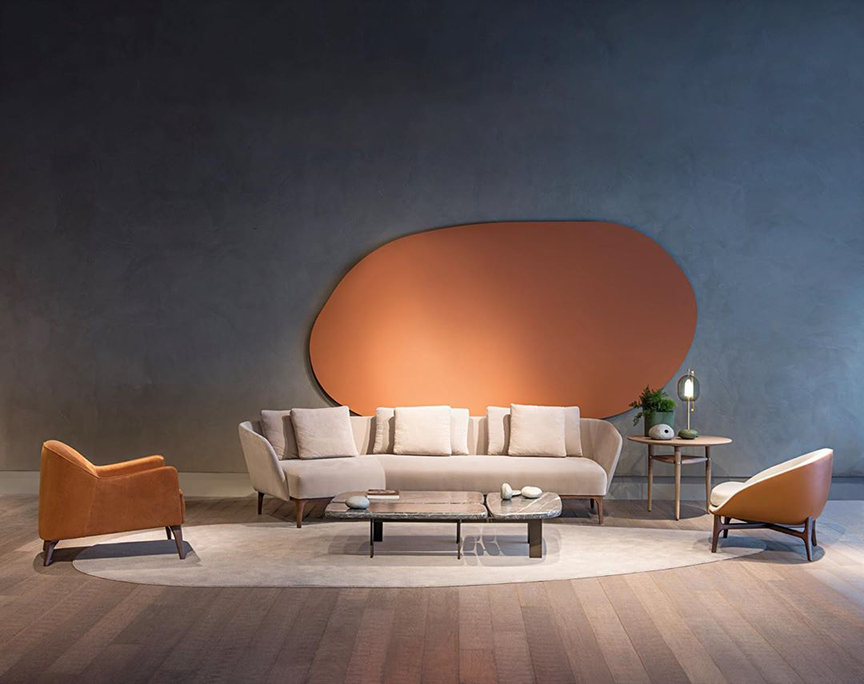
What do you draw inspiration from to form your own unique perspective?
My inspiration comes from nature, materials, architecture… All those different elements are part of the repertoire that moves me to create and design products of my own.
What can a client expect from you when you take on their project?
What marks our work is how we evaluate the location where the project will be held. I take into account the cultural characteristics; the local materials we can work with; the vernacular architecture of the place, and how people interact with it or behave there… I also really enjoy exploring and connecting materials, textures and colors… The aim of my work is to turn it all into an enhanced experience that will bring out the real essence of that location to visitors.
What recent changes in the industry have you noticed and want other designers to take part in?
I’ve been really concerned with the environmental issues, and consumption plays a big part in it as we’re also discussing discard. I believe we’ve really passed the time where we could just raise a flag over the problems we’ve been noticing in the world as a consequence of our damaging exploration of natural resources. We’re right now sensing an imminent call for action regarding the environmental issues. Change really is urgent. It’s essential that we, as designers and architects, are able to engage in the cause and make conscious choices when developing a project.
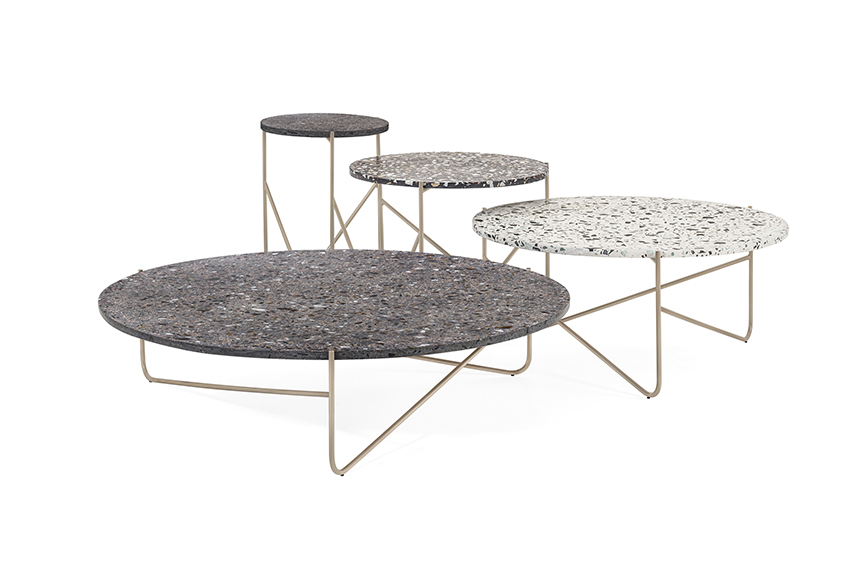
What can people expect from your new collection?
We’re now working with the concepts of a brand new edition. We’ve been inspired in the past by Japanese architecture, culture and design so we’ll keep developing that. We’ll also create a brand new chapter of furniture design with natural fibers and materials, inspired by food. We’ve also been experimenting with shape, adding volume to new pieces.
Any goals for this year, both for you and/or your brand?
Right now, I’m working on an upcoming Four Seasons hotel as well as a brand new collection of furniture design for Artefacto. There are new projects to be announced as well. But we can’t reveal much just yet.
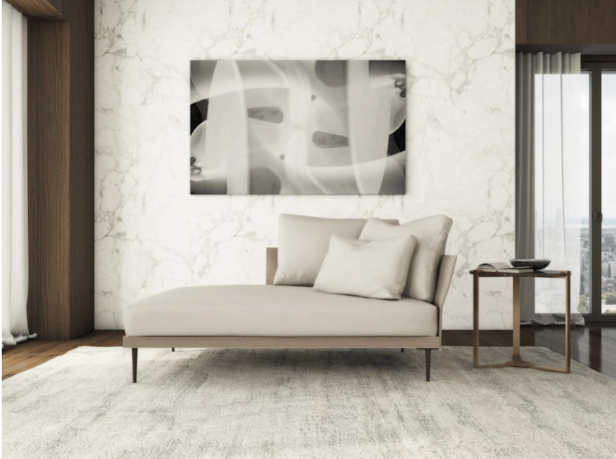
Photos courtesy of Artefacto
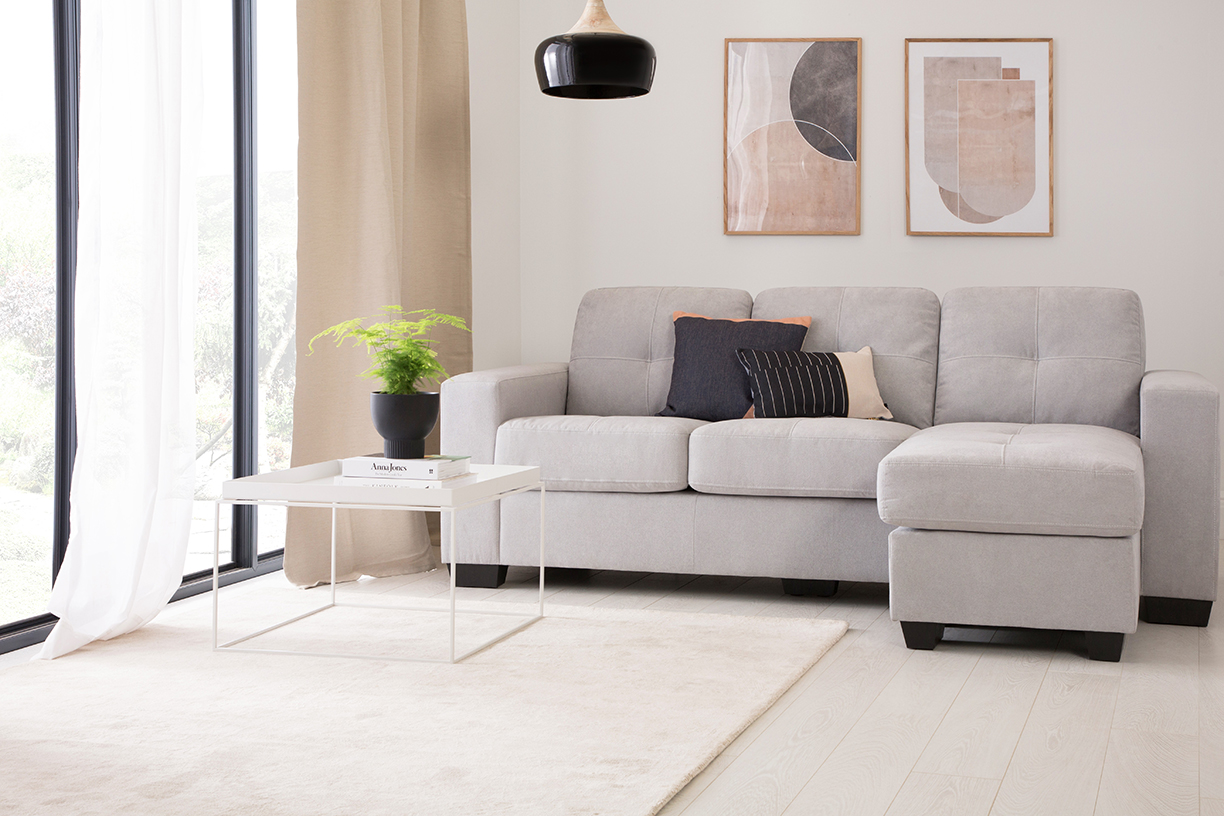
In a recent Furniture Choice survey of adults in Great Britain, minimalism has emerged as a favorite summer interior design trend, beating out other decorating styles like maximalism, jungle and tropical.
Rebecca Snowden, Interior Style Advisor at Furniture Choice, shared three tips to achieve the minimalist trend at home.
Keep surfaces clean and clutter-free
Based on the philosophy that less is more, minimalism is an intentional mode of living centered around simplicity. When aiming for this look at home, Snowden recommends to focus on clean lines and clutter-free spaces.
“Start by decluttering ruthlessly – eliminate anything that’s unnecessary and store belongings out of sight,” she notes. “In the living area where multiple activities take place regularly, make it a habit to clear surfaces daily. Keep a sofa feeling cozy with a couple of cushions and tidy up the coffee table for a clean look that feels relaxing at the same time.”
Other ways to reduce a cluttered look is to keep wall décor to a minimum, opting for pieces that are simple and streamlined. “A few pieces of framed artwork can add personality to the room and make it feel lived-in while staying on-trend,” Snowden says.
Stick to a neutral color base
At the heart of minimalist styling is a neutral color palette — subtle hues of white, grey, taupe and similar earth tones are calming and make a space feel fresh and clean. According to Snowden, the easiest way to add style to a minimalist home is to choose essential furniture pieces that contrast beautifully while keeping within the neutral colour spectrum.
“A white table with a sleek chrome finish lends a striking, modern touch and blends seamlessly into the overall look,” she adds, “If tight on space, get a round table with a pedestal base. Otherwise, larger spaces can opt for an extending table that’s practical and space-saving. Elevate the look with chrome-legged dining chairs that play up clean lines with a high back.”
Another way to make a minimalist home come to life is to place indoor plants within the space. “Greenery is often what turns a house into a home, and when it comes to this trend, plants can add warmth like no other. Keep it simple with a couple of potted greens or hang some air varieties that function as air-purifiers, as a bonus,” Snowden says.
Furnish and decorate with simple, clean silhouettes
The best way to furnish your minimalistic space is to focus on decorative pieces that are purposeful, such as a knitted throw for dipping temperatures or a minimal lamp for reading. As for centerpieces, a cushy sofa with a clean silhouette oozes comfort and makes a space feel inviting.
“Minimalist living is perfect for those who revel in clutter-free environments and enjoy interior design with a purpose. Display one or two treasured items instead of multiple small objects, and always pick pieces intentionally,” says Snowden. “Rugs are a good one — luxurious yet unfussy, and they double up to section off areas for different functions, while photos bring a sense of homeliness.”
Ultimately, Snowden notes being a minimalist doesn’t mean stripping all personality away — “it simply means that what does get displayed is thoughtfully curated and means a lot.”
All photos courtesy Furniture Choice Ltd.
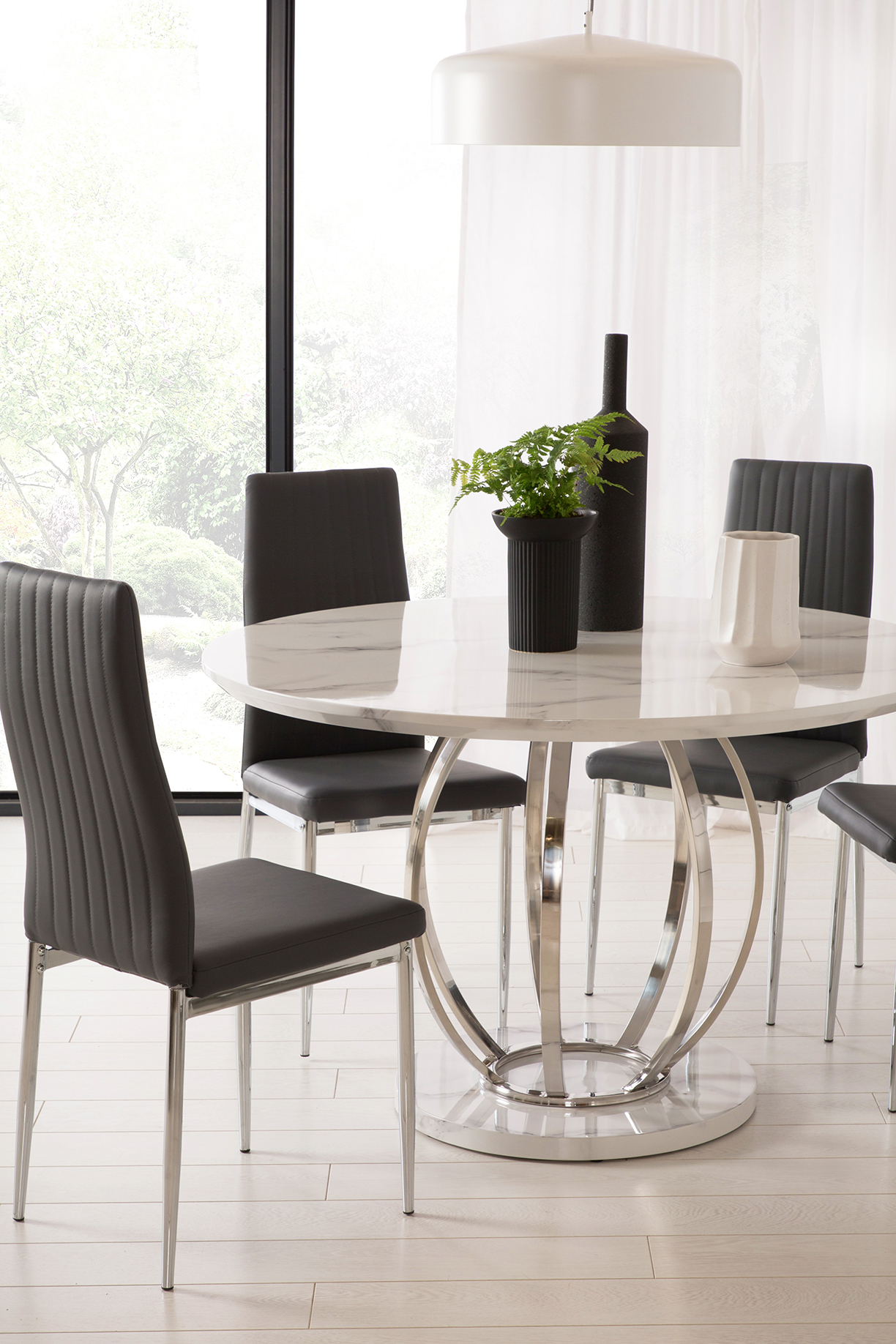
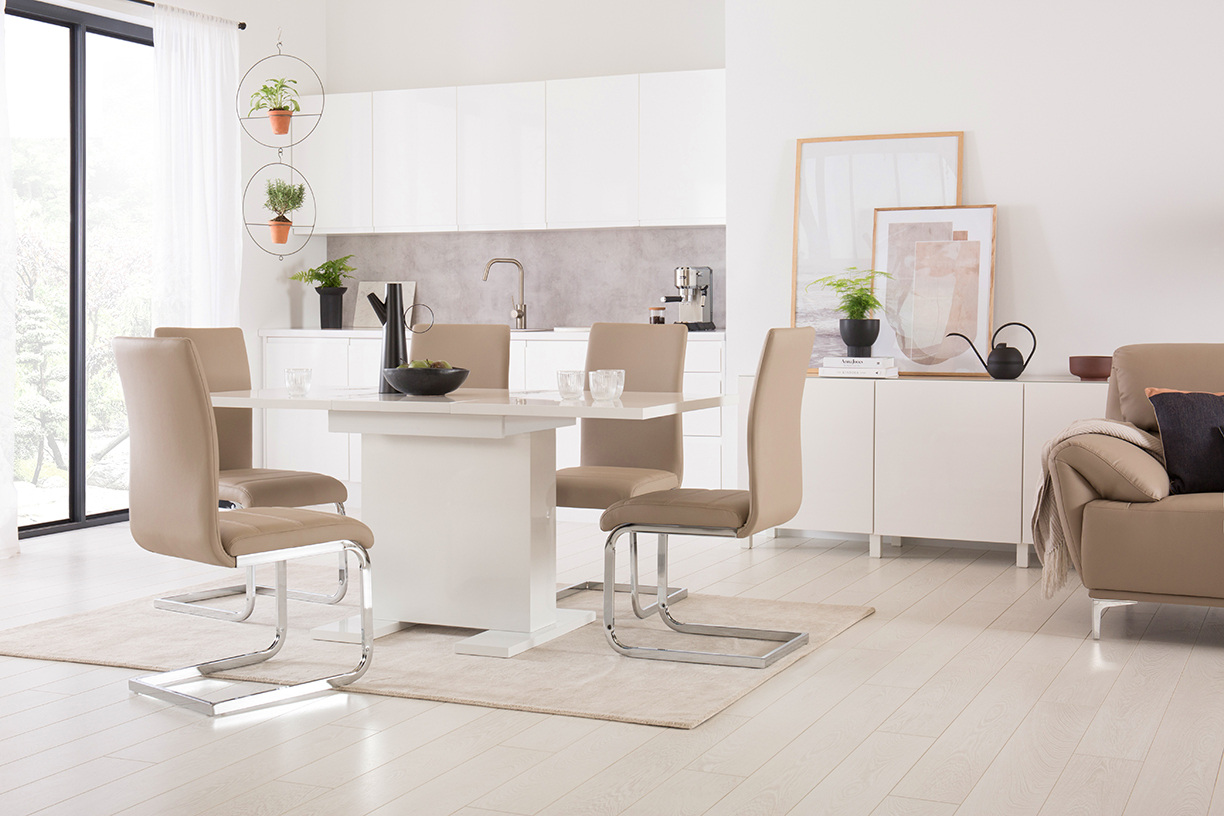
Minimalism is oftentimes a more classic, aesthetically pleasing sense of design that makes a statement in a simplistic way. Incorporating simple and timeless designs, Arteriors offers a selection of pieces, bringing a warm tone of sophistication to lighting, furniture and accessories in their most natural forms. Below are several pieces from their assorted collections that complete any minimalistic theme.
All photos courtesy Arteriors.
Completed only just last year, the interior of this simple, beautiful Budapest apartment project was redesigned by husband-and-wife team Margit Szinger & Géza Hamori of Margeza Design Studio.
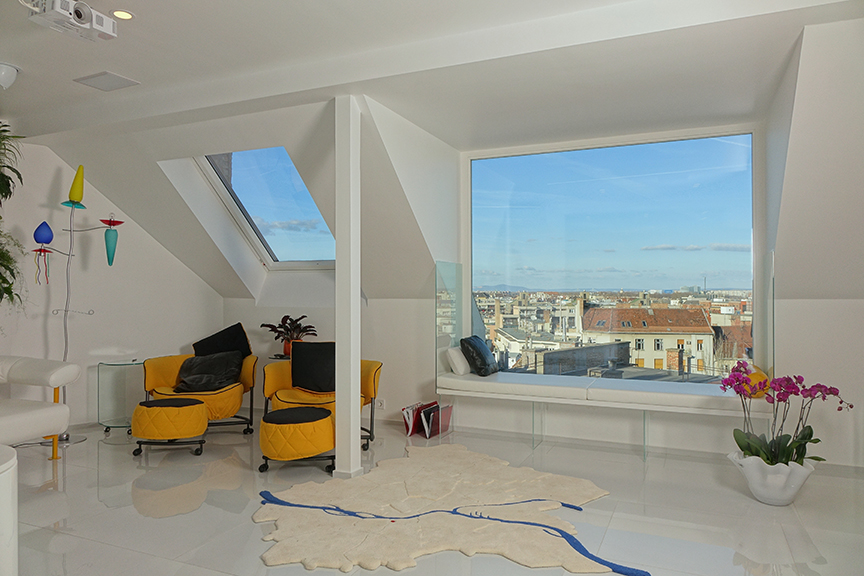
Like wayward travellers, Szinger and Hamori’s style of interior designing exists on a project-to-project basis, each one taking a year to complete. “Normally we do one project per year,” says Hamori, “we move in and try living there. Then we move on.”
Originally built in 1928, the apartment building lies in the historical center of Budapest near the Castle of Buda. It was later converted into 4 apartments with 2 additional apartments added from refurbishing the attic. Inside the Margeza apartment, the design team was able to implement their preferred style, and in a way themselves, into every room of the home.
“Our spirit reflects on our apartments. We like a minimal design, but the softer version is more pleasing for us,” Hamori says, noting their choices in curving furniture, vivid colours, irregularly shaped pieces that reflect a sense of playfulness.

The defining aspects of the apartment are the living green wall and the glass wall, which both emphasize liveliness by bringing the outdoors in. With the rest of the walls painted white, little spots of colors from pieces in the apartment add to the energy of the space.
Every detail was carefully orchestrated by the Margeza design team. Every electrical device was chosen to minimize energy consumption, including the use of LED lights only. The kitchen, doors and stairs were handcrafted and made-to-size. One of the most iconic buildings in the city, the Parliament of Budapest and the river that splits the city, is in full view from the living room window, a view that the team wanted to emphasize. To do so, special window panes were put in place so no divided lines would break up the views of the city skyline.
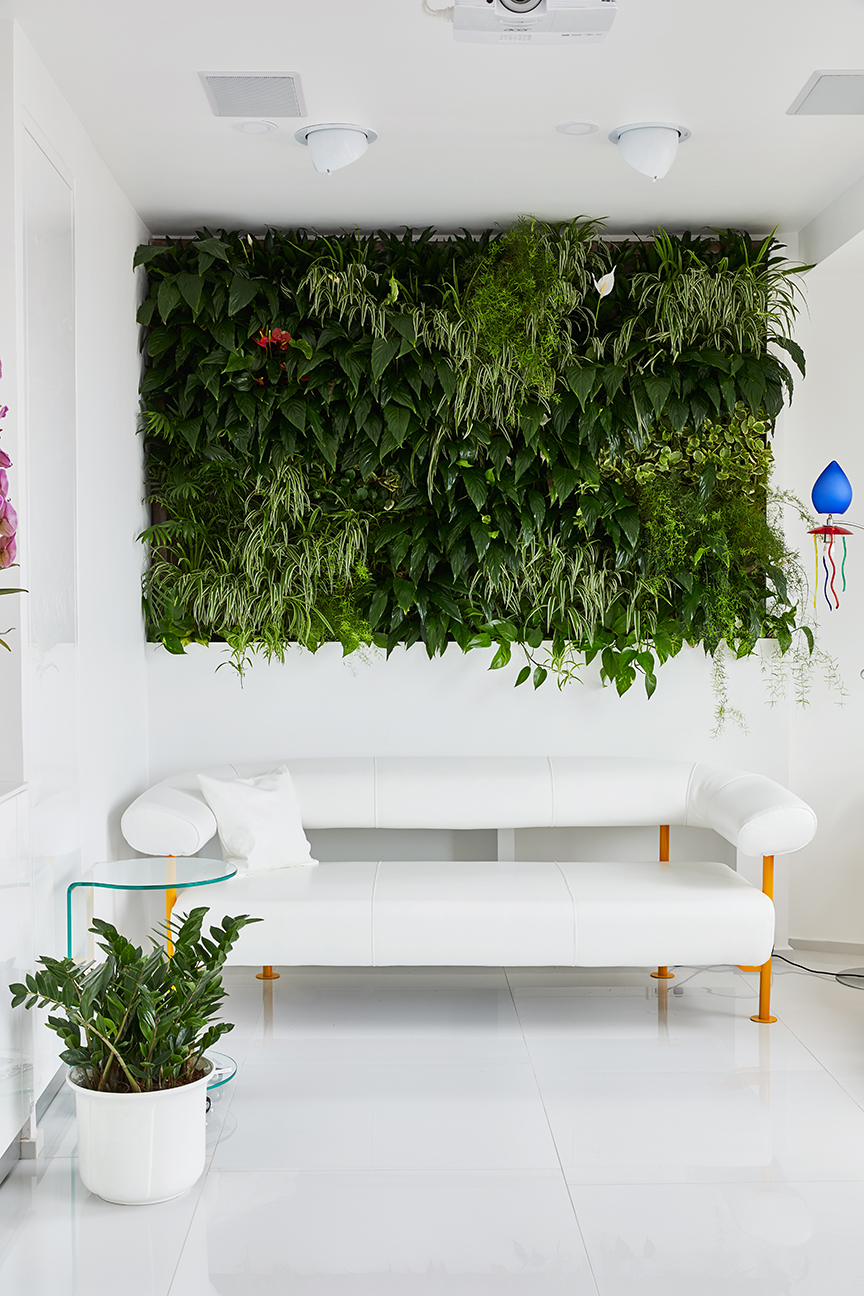
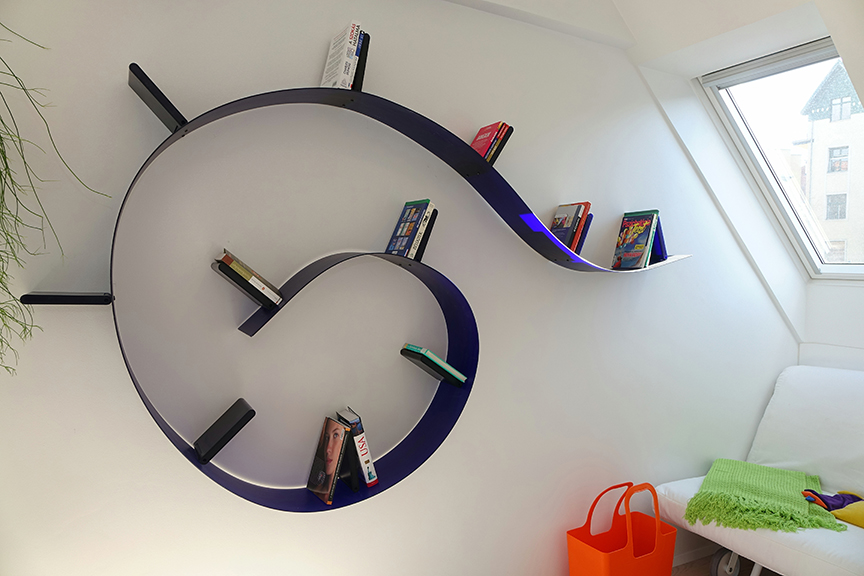
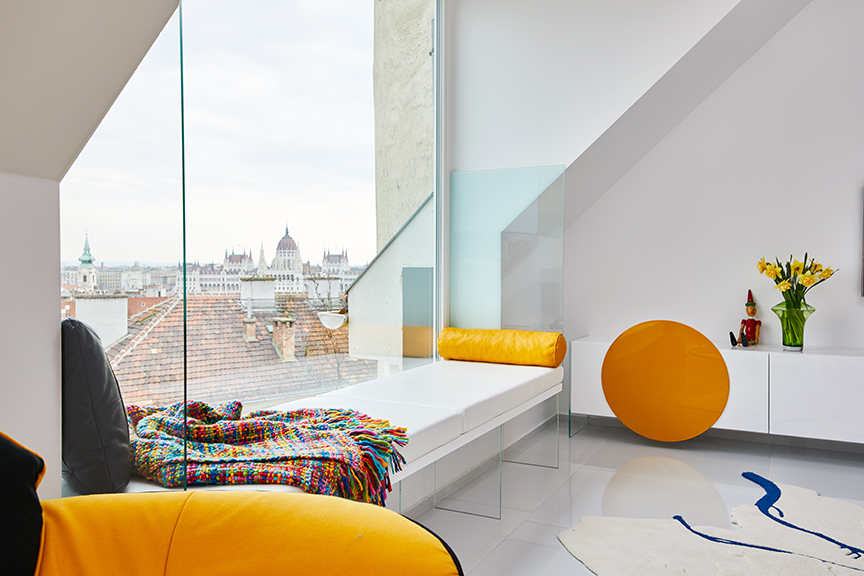
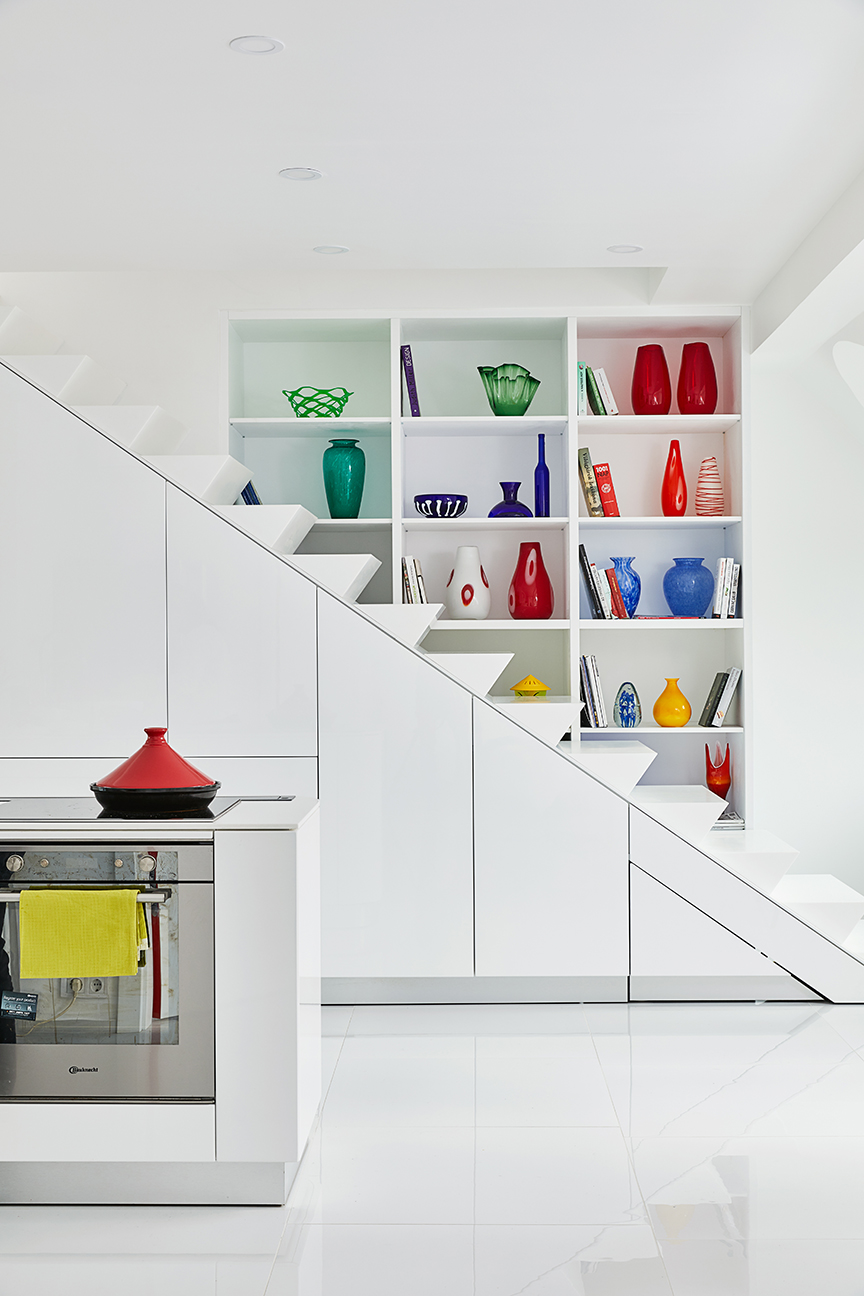
Another unique touch includes the white wool carpet in the living room that shows a map of Budapest, with each district rendered with different wool-lengths. The Danube river is marked blue and the location of the apartment itself is pinpointed in red.
“We like this method because it gives us more freedom, we do not have to conform to the tastes of a customer,” Hamori states. “We only accept commissions where we get complete liberty to design it as we want. The customer would see the finished, realized apartment with every fine detail.” Hamori further notes that he and his wife are maximalists and that their passion is to build homes that bring joy to those that live in them.
Having finished their project in Budapest and put the finished apartment up for sale, the team is ready for a new challenge.

Photos courtesy of Margeza Design Studio


